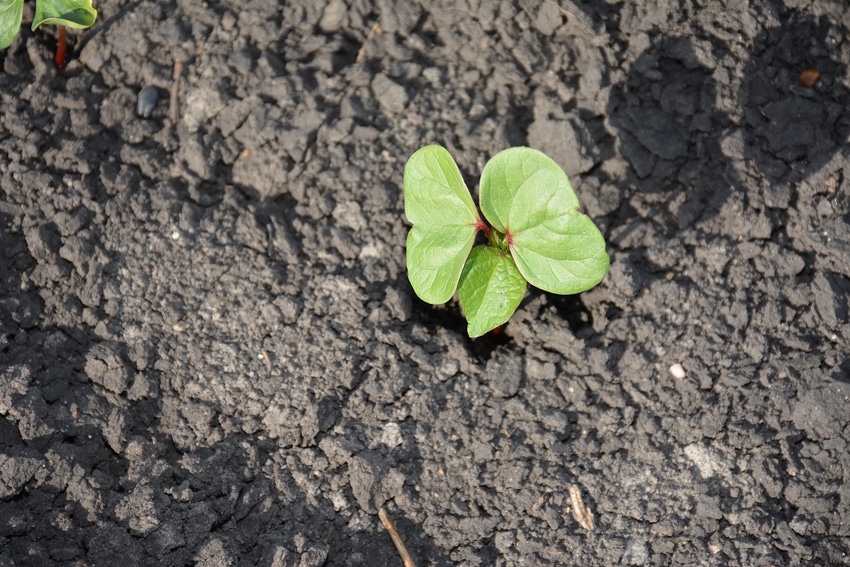April 3, 2017

“Be careful what you wish for.” We have heard that phrase many times, in songs and poems, books and old adages, and probably from parents and teachers and a sibling or two. Its exact origin is unknown, but some credit an early 1800's Goethe poem, others claim the old common saying is much older, some say younger.
Regardless its origin, however, nothing could be more true or fitting considering this year's early spring in Deep South Texas. Farmers in the Lower Rio Grande Valley (LRGV) are finding the phrase particularly appropriate as they consider the good, the bad and the ugly of an early planting season this year.
"We have cotton in all stages right now. Some of the earliest cotton is already pin head squaring, and then we have some cotton just coming up," reports Texas A&M IPM Extension agent Danielle Sekula in Weslaco. "Everyone planted pretty much a whole month earlier this year."
Planting early, of course, means an early start on the growing season, a situation most farmers consider a benefit. While there are plenty of good things that can be said about why getting a jump on the crop year is a good thing, there is also a down side.
EARLY APHIDS
Sekula says while cotton got an early start in parts of the Valley, she reports early planted grain sorghum is already at V7 and V8 growth stage, and while that is promising from the standpoint of the crop maturing early, on the “bad side” of it is the chance of an early infestation of sugarcane aphids, which have already been discovered in grain sorghum, especially near the Rio Grande River (and the Mexican border).
"The sugarcane aphid is [already] here, and from what I can see from my observation is that it moves into fields and populates them when sorghum is at V7, mainly V8 stage, prior to booting. I believe that seed treatments do not prevent the sugarcane aphid from moving into sorghum fields early, nor is it the time of the year that brings them in, because if that were the case it wouldn’t matter what stage the sorghum was in we would not start seeing them move into commercial sorghum until mid-April, as we have the past four years of monitoring them and collecting phenology data," she says.
Sorghum fields across the Valley at below V7 stage, including an Extension variety trial plot in Mercedes, have little or no signs of sugarcane aphids yet. She suspects as soon as fields reach V7 and especially V8 stage, scouting will reveal aphid movement into the field.
EARLY TREATMENTS
"My sorghum variety trial is at V5-V6 stage right now [but] surrounded by other sorghum from the South, East and West at V8 stage," she says, and those fields are showing early signs of aphid movement. She says some farmers near the river have already treated their V8 stage sorghum as aphid populations reached threshold with as many as 400 aphids per leaf on some plants.
She encourages Valley sorghum producers to start scouting frequently in anticipation of early aphid arrival. She blames the early sugarcane aphids on exceptionally warm weather in recent weeks and on strong southerly winds from Mexico where increased acres were planted even earlier than in the Valley. And she warns the aphid problem will probably intensify in the days and weeks ahead.
"Mexico has grain sorghum in the soft dough stage, and has been having high populations of sugarcane aphids and [many farmers] have been spraying fields in the San Fernando, Tampico, and Rio Bravo areas," she says, and adds it is better to stay on top of aphid movement into fields and to spray as soon as aphid populations reach threshold numbers.
In this case, early planting and crop growth in the LRGV, combined with warm weather and southern winds, are causing producers to consider treating fields earlier this year than most, and that's the ugly side to an early spring start. The need to fight pests in the field earlier means greater input costs, and more investment in time.
Fortunately, growers in Texas have two options this year for control of the SCA in grain sorghum. Products available to spray for the sugarcane aphids this year include Sivanto and Transform. For Sivanto, Sekula recommends to spray at 4 to 5 ounces per acre, and not to go lower than 4 ounces for good residual effect. Transform has been available since Section 18 use was approved in late January. She recommends using the product at 1 to 1.5 ounces for effective control. She says less than 1 ounce will not provide a good residual.
COTTON PESTS
Sekula reports a lot of pest activity in Valley cotton.
"We are seeing high numbers of thrips, mainly down by the river and in cotton fields planted near onion fields being harvested," she says.
Sekula reports cotton aphids are also being reported but adds that beneficials are now moving in and doing their job to control them, but some growers have already had to spray. Sekula is also seeing some spider mite activity in cotton, and whiteflies are just now beginning to show up in cotton fields.
In spite of early detection of pests in cotton and sorghum, so far Sekula says she has not heard or seen much pest activity in early planted corn this year.
You May Also Like




